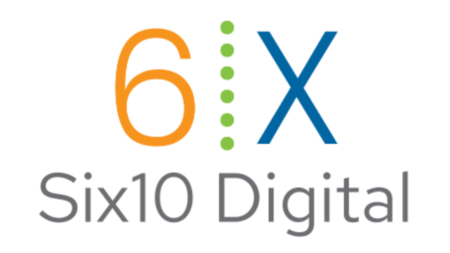As many of you know, one of the main goals we have at 610 Digital is to keep our client base well informed and educated on digital marketing trends. This allows us to speak with our clients and have them better understand what we are telling them and help to decipher monthly PPC reports and such.
We’ve put together a list of 66 digital marketing definitions that cover the basics, Google Ads and Analytics, lead generation, to name a few. We hope you take the time to become familiar with most of these terms and if you have any questions or you don’t see a term and definition on this list that you’d like to learn more about, please fill out the contact form and we will we get back to you and add them to this list.
Digital Marketing Terms You Should Know
A/B Split Testing: a method in marketing research to test the results between two different marketing strategies (e.g., ad copy, email subject line, images) in order to improve the effectiveness of the final strategy. Some important variants to test are:
- Landing Page URLs
- Ad Text Variations (different call to action, different wording of ad, different promotion)
- Subject lines
- Image creatives
Ad Extensions: a Google Ads feature that shows additional information in your top placed ads such as,
- location and phone number
- site links to pages deeper in your website
- call outs
- structured snippets
Banner ad: a graphical web advertising asset that can be shown across various websites. Multiple size dimensions can be created but the common sizes are:
- 250 x 250 – square
- 300 x 250 – inline rectangle
- 468 x 60 – banner
- 728 x 90 – leaderboard
- 120 x 600 – skyscraper
- 160 x 600 – wide skyscraper
Above the fold: the section of a webpage that is visible without scrolling.
Backlink: This is a link that directs users from another website to your page and is a part of SEO Linkbuilding. Collecting quality backlinks is one of the facets of search engine optimization (SEO), as they are one of the determining factors of a page’s relevancy, popularity, and/or importance.
Bounce Rate: The percentage of visitors to your website that leave without visiting more than one page of your site. For example, if 100 people visit a website, and 50 of them immediately leave, the website has a bounce rate of 50%. Websites aim to have as low of a bounce rate as possible, and averages tend to be anywhere between 40-60%.
B2B (Business to Business): business that sells products or services to other businesses.
B2C (Business to Consumer): business that sells products or services to the end-users or consumers.
Backlink: This is a link that directs users from another website to your page. Collecting quality backlinks is one of the facets of search engine optimization (SEO), as they are one of the determining factors of a page’s relevancy, popularity, and/or importance.
Blog: A website or page where content is uploaded regularly featuring articles, opinion pieces and news relating to the company or individual that contributes to it.
Buyer’s Journey: the process a lead goes through in order to go from awareness to decision. A new lead has to pass through three stages—Awareness, Consideration, and Decision—in order to be ready to be sold. (See Lead Funnel, TOFU, MOFU, BOFU)
Call to Action (CTA): A word or phrase to promote an immediate response from your customers. The action could be to click a link, fill out a form, subscribe to an e-newsletter, or make a phone call.
Call Tracking: The ability to track how many calls your business received as a result of your Google Ads campaigns. You need to enable a Google Forwarding Phone Number in order to effectively leverage Call Tracking. 610 Digital recommends CallRail for your call tracking efforts.
Campaign: The structure within Google Ads that contains your ad groups and keywords, plus all necessary settings for the campaign, such as, budget, locations, time of day and other targeting settings. You can have one or many campaigns as part of your ads account.
Click (Ad Clicks): the number of times users clicked on a digital ad and landed on your website
Click-through: the process of clicking on an online advertisement leading to the advertiser’s intended destination.
Click-through rate (CTR): The average number of click-throughs per hundred ad impressions, expressed as a percentage (CTR = Clicks / impressions X 100)
Contextual advertising: a method of advertising based on the content of a web page.
Conversion rate: the percentage of website visitors who that do what you want them to do, whether it’s signing up for your free offer, calling you or buying from you. For example: You have an ad running to get people to visit a landing page about your services and have a form on that page. 1,000 people see that ad and click but only 130 filled out the form. The ad resulted in a conversion rate of 13%.
Cost per action (CPA): online advertising payment model in which payment is based solely on qualifying actions such as sales or registrations.
Cost per click (CPC): online advertising payment model in which payment is based on the number of click-throughs.
Cost per lead (CPL): online advertising payment model in which payment is based on the number of qualifying leads generated.
Customer acquisition cost: the cost associated with acquiring a new customer.
Display Ads: Ads on a display network which include many different formats such as: images, video, and audio. Also commonly known as banner ads, these are the advertisements that are seen around the web on other websites like news, blogs and social media.
Drip Campaign: Used in a marketing automation and lead nurturing strategy and is a series of events that slowly or quickly move a lead through a company’s lead nurturing process. A workflow could be a set number of automatic emails that are sent to prospects that take different actions, such as viewing a pricing page or scheduling a free consultation. Other uses could be a five part onboarding series, a welcome series, etc.
Google Ads (AdWords): A Google owned program that is used by advertisers to place ads on Google search results pages, on YouTube, and on Google ad network sites. Google Ads is the primary platform for PPC advertising. 610 Digital provides Google Ads management and account audits, learn more.
Google Analytics: A Google platform that allows you to collect statistics and data about website visitors. You can see from where the traffic comes from, the behavior of the user on the site and any conversions & goals that have been set up.
Google My Business: The platform on which businesses can input information to appear in the search results, map packs, location searches, and more. Name, address, phone number (NAP), website link, hours of operation, reviews and more can all be managed through this tool. GMB is crucial to local SEO campaigns, and is directly related to location-based searches. Get started with optimizing your GMB listing.
Google Search Console (formerly Webmaster Tools): Search Console is a free tool for webmasters and site owners. Within the tool are several areas that include data on how a site is performing in search. Search Console differs from Analytics – it does not measure traffic, it measures a site’s visibility on search pages, and indexability by Google crawler bots.
Geo-targeting: detecting a website visitor’s location to serve content or advertisements relative to the location in question.
Headline: The first line of your image, text, and search ads. This is the first thing people will see, so make sure it not only draws people in but also gives people an idea of what you are promoting/offering. Expanded Text Ads give you two headlines in your text ad (H1 and H2) with up to 30 characters in each.
Impressions (Impr.): a key performance metric that tells you how many times a single instance of an online ad has been shown on the Search and Display networks.
Impression Share: this metric refers to the percentage of times viewers have seen an advertiser’s ad, in relation to the total possible amounts that ad could have been seen. If an ad campaign’s impression share is 70%, then the ads showed 70 out of 100 possible times.
Inbound link: a link from a site outside of your site that comes back to your site.
Inbound marketing: a marketing strategy where clients are encouraged to find and purchase a product or service on their own initiative through supporting content. Sometimes referred to as organic traffic or SEO traffic.
Keywords: a word or several words (long tail) used by people when searching for something online. Keywords are also the words targeted when writing online content for your blog and web pages to give them an SEO keyword focus.
Keyword Match Type: different setting for each keyword to control how closely the search term must be to the keyword in order to trigger your ad.
- Broad Match – The keyword setting that allows your ads to be triggered when any type of similar variation, synonym, or phrase is searched. It will have the largest reach (impressions) compared to all other match types but will be far less targeted. If you have a broad keyword like ‘men’s shoes’ your ad could appear in related searches like ‘men’s boots’, ‘men’s gloves’, ‘women’s shoes’, or running shoes. This wide variation and reach can cause Broad Match keywords to bring in a lot of traffic and some could be irrelevant traffic. Broad match users, beware!
- Broad Match Modified (BMM) – these keywords work by appending a ‘+” to the specific word you want to make sure is included in the search query. Let’s say you want to definitely target men’s shoes but don’t care about color, style, etc. You would lock in those words by adding a ‘+’ like this, +men’s +shoes. You can also add non-modified keywords to give a little more broad search intent but still keeping in the men’s shoes direction. (e.g., +men’s +shoes for running)
- Phrase Match – keywords must be present in the search query in the same order as mentioned by you (e.g. “blue shoes”). Can be shown for ‘new blue shoes’, ‘blue shoes for men’, ‘what’s the song about blue shoes’, but not ‘blue suede shoes’.
- Exact Match – A keyword setting that makes it so your customers have to enter in the exact keyword phrase in order for your ad to show. You create exact match keywords by placing brackets around the keyword phrase: [red men’s shoes]. This would only show for that exact search, no other words in the query.
Landing Page: The web page your audience lands or ends up on when they enter your website from clicking on an ad, visiting from an email, or a social media link. A typical landing page consists of well-written copy, images or videos and a conversion form. It’s best to remove other links and menus from a landing page so that the visitor has one thing to do — convert on the form or call-to-action.
Lead Funnel: is the pathway and the series of steps that a lead has to cross, right from being just another lead, to an interested prospect, to a hot opportunity to finally becoming a paying customer. There are three main sections of a lead funnel:
- TOFU (top of the funnel) is TOFU stands for top of the funnel and is the beginning of the buyer’s journey. The information your website provides to new leads are answers to services or product questions, brand positioning, and common sales questions.
- MOFU (middle of the funnel) is the consideration stage of the buyer’s journey. A middle-of-the-funnel lead has moved from awareness to consideration and is ready to receive information about your product or service. A branded offer is given to provide the lead with more information and address any pushback.
- BOFU (bottom of the funnel) is the last stage in the buyer’s journey, the decision stage. When a lead arrives at the decision stage, they are ready for your sales team. A sales offer such as a demo or a strategy session is a great offer for a lead at this time.
Lead Generation: the process for acquiring new leads. Online lead generation is done by providing valuable content to website visitors in exchange for their contact information. Tactics used to drive potential leads could be PPC ads, Social Ads.
Lead Magnet: Or content offer, is what you provide in exchange for information from your website visitors in order to turn them into a lead. A content offer can be an ebook, guide, white paper, or webinar that is given to a visitor after they provide you with some details, such as name, email, and business name.
Lead Nurturing: When a visitor turns into a lead on your website they are most likely not ready to buy. Lead nurturing is providing those initial leads with valuable information about your industry or product until they are ready to purchase. By caring for your leads you develop the relationship and show that you care. (See Drip Campaign, Lead Funnel)
Link Building: is the act of increasing the number outside sites linking back to yours (backlinks). This process typically involves creating high-quality content (interesting, engaging) that others want to share.
Marketing Automation: the use of software to automate repetitive tasks related to marketing activities and present relevant content to marketing leads. Email programs can use automation to send email messages to people based on certain triggers (new customers, did or did not open the last email, drop campaign, etc.). Marketers also use automation to nurture leads by sending relevant content to previous visitors of a website, in an attempt to get the visitor back to convert into a sale.
Negative Keyword: a very important aspect of Google Ads is the addition of negative keywords. These words are keywords that you DO NOT want to have ads appear for. Let’s take our “men’s shoes” example, you only sell men’s running shoes so negative keywords should be “women’s shoes”, “women”, “girl shoes”, “boots”, “work shoes”, etc.
Off-Page Optimization (SEO) : Off-page optimization is everything you can do to improve your organic search rankings that does not involve your actual website. This includes anything you can do to create high-quality backlinks and further drive your exposure.
On-Page Optimization (SEO): On-page optimization involves actions you take on your website to improve your organic search engine rankings and can include improving URL, page titles, headings, meta tags or optimizing your website content.
Organic Traffic: This is the traffic your site receives from unpaid search results. This is one of the main goals of SEO and content marketing because it provides a powerful platform for long-term growth.
Opt-in email: email that the recipient has explicitly given permission to receive.
Opt-out: the action a potential email recipient takes to indicate that they no longer wish to receive marketing communications.
Pay per click (PPC): an instant way to get your business to the top of the search results pages. online advertising payment model in which payment is based on qualifying click-throughs. Typical examples include Google Ads, Facebook or LinkedIn sponsored ads.
Persona (buyer persona or target buyer): the perfect representation of whom you want to purchase your product or service. A buyer persona is a complete breakdown of behaviors, interests, pain points, goals, demographics, and professional careers. This is not just some made up persona — but is based on research of your target market so that your customers’ buying motivations, behaviors and goals are considered.
Pixel: a snippet of code that is inserted onto your website for tracking purposes from a conversion or sale. It can gather analytics and data on your customers and their movement across your website.
Quality Score (QS): The 1-10 score Google gives each one of your keywords to represent how relevant the keyword, ad, and landing page are for those customers looking at your ad. Higher Quality Scores lead to lower CPC. QS is comprised of three components:
- Landing Page Experience
- Ad Relevance
- Expected Click-thru-rate
Remarketing: Also known as retargeting, a type of paid ad that enables you to reach people who have previously been on your site. You’ve probably seen remarketing everyday while you search the web. Yes, these are the ads that “follow” you around when you visit other websites and see an ad for the pair of shoes you want to buy or a service for landscaping after you looked at a local landscapers website. Remarketing is a tactic used to get customers who did not make a purchase back to your site
Responsive Web Design: A design principal of creating a website that allows all of the content to show correctly regardless of screen size or device. Your website will “respond” to the size of the screen each user has, shrinking and reorganizing on smaller screens, and expanding to fill appropriately on large ones.
ROAS: stands for Return On Ad Spend. A PPC marketing metric that demonstrates the profit made as compared to the amount of money spent on the ads. Similar to ROI.
- Formula: Return on Ad Spend = Revenue / Ad Spend x 100
ROI: Stands for Return On Investment. In order for a business to receive a positive ROI, they must earn more money using marketing channels than they are spending on the marketing itself.
- Formula: ROI = (Revenue – Cost of goods sold) / Cost of goods sold
SEO (Search Engine Optimization): the process of improving a website’s performance and positioning in organic search engine results through a variety of methodologies including content production or improvement, technical and code improvement, and link acquisition.
SERP (Search Engine Results Page): the page featuring a list of search results that is returned to the searcher after they submit a keyword search.
Search Query Report: a Google Ads report that shows the actual Search Terms that triggered your ads.
Sessions: a metric in Google Analytics that measures one user interacting with a website during a given period of time, which Google defaults to 30 minutes. A session is not dependent on how many pages are viewed, so if a person goes to a website and looks around at different pages for 20 minutes, it would count as 1 session.
Sitemap: an XML file, or page on a website, that lists all of the pages and posts for search engines to see. This document helps search engines quickly understand all of the content that they should be aware of on a particular website.
Thank You Page: a thank you page is imperative if you to fully track leads and sales. This page can be added after people make a purchase on your site or you can add a thank you page to your contact form. Conversion pixels and tracking should be added to the final thank you page.
Unique Visitors: A metric used in web analytics to show how many different, unique people view a website over a period of time. Unique visitors are tracked by their IP addresses. If a visitor visits the same website multiple times, they will only be counted once in the unique visitors metric.
Remember, if you have any questions or you don’t see a term and definition on this list that you’d like to learn more about, please fill out the contact form and we will we get back to you and add them to this list.







